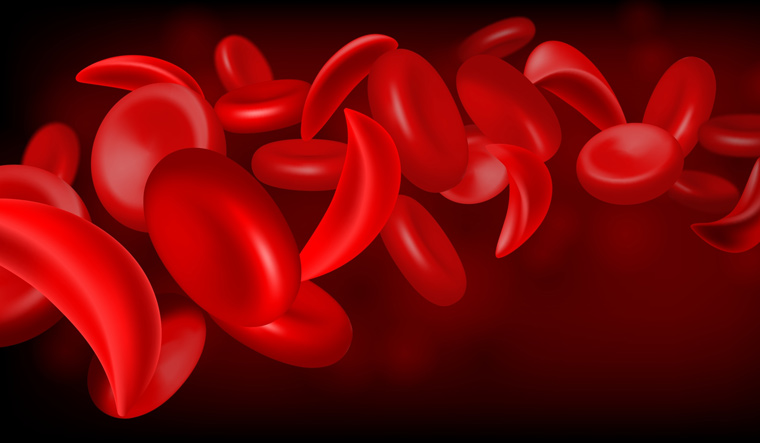Sickle cell disease (SCD) is a severe hereditary blood disorder that poses a significant public health challenge in India, particularly in regions with high malaria rates, known as the "sickle belt," which extends from West Bengal, Orissa, Jharkhand, Madhya Pradesh, Chhattisgarh, and Bihar to Maharashtra and Gujarat. The disease significantly impacts longevity, reducing the average life expectancy to 20-30 years, and leads to a poor quality of life characterised by pain and suffering. Despite its severity, SCD has failed to receive the attention it deserves. Every year, an estimated 30,000 children in the country are born with SCD, adding to the over two crore existing patients. Given its devastating impact, it is crucial to prioritise sickle cell care in India.
The launch of the National Sickle Cell Anaemia Elimination Mission by the Union government last year was a positive step but its scope may fall short in effectively combating sickle cell anaemia. Targeted interventions are necessary to address the complexities of this disease. A centralised database that includes information on patients and disease carriers is essential. Such a repository would facilitate timely treatment delivery and preventive measures, ensuring that those affected receive appropriate care. By implementing focused strategies and harnessing the power of data-driven approaches, the mission can significantly enhance its impact in the fight against sickle cell anaemia.
Several systematic changes are required to implement the mission effectively. In rural and tribal areas of the country, where healthcare infrastructure is particularly lacking, individuals and families bear a significant burden. It is crucial to enhance healthcare infrastructure in these under-served regions to tackle the increasing threat of SCD. Primary healthcare centres (PHCs) should be upgraded with essential medical supplies, point-of-care diagnostic tools, and emergency care protocols. Training healthcare workers to recognise and treat complications of SCD, such as pain crises and infections, is crucial. Besides, establishing specialised sickle cell centres in high-burden areas can provide comprehensive care, including advanced pain management, infection prevention, and psychological support.
Multidisciplinary teams, consisting of medical specialists, nurses, and social workers, can address the complex needs of SCD patients through integrated care plans. Genetic counselling services should also be made available to individuals and families affected by SCD to help them understand their carrier status and make informed reproductive choices. This can help significantly reduce the incidence of SCD in future generations.
Strong public-private partnerships are essential to overcome infrastructural challenges and skills gaps. The governments (both central and state) also needs to develop schemes that make bone marrow transplants, the only curative option for SCD, accessible to affected patients, similar to the Thalassemia Bal Sewa Yojna for thalassemia patients.
A child born with sickle cell anaemia faces a life filled with extraordinary challenges and constant health struggles. The sickle-shaped red blood cells cause blockages in blood flow, leading to frequent episodes of intense pain known as sickle cell crises. These painful episodes can be disabling and often require hospitalisation and strong pain management. Additionally, these children have an increased risk of infections due to compromised immune function. They also experience frequent or persistent anaemia, acute chest syndrome, and even stroke. As a result, regular medical check-ups and preventive care, including prophylactic antibiotics, are necessary.
The disease not only affects the physical well-being of these children but also their mental, emotional, and social well-being. Common symptoms among these children include delayed puberty, shorter stature compared to their peers, constant fatigue, and anaemia, which limit their ability to participate in physical and social activities.
Emotionally, the chronic nature of the disease can lead to feelings of frustration, anxiety, and depression. Adding to their trauma are widespread misconceptions, as some communities consider sickle cell disease a curse. Many people in these communities do not understand the genetic nature of SCD, instead attributing its symptoms to curses, poor lifestyle choices, or infectious diseases. This misunderstanding fosters fear and discrimination, resulting in social isolation for affected individuals and their families.
The consequences are significant, as most children with SCD in resource-limited countries like India do not survive past their second decade of life. Frequent hospital visits, lost productivity, and the financial burden of medical expenses worsen poverty and social inequality.
This is unfortunate and unacceptable because the disease is preventable. Simple screening programs can identify carriers and affected individuals early on. Couples at risk of having children with SCD should receive counselling about their reproductive options. New-born screening is especially effective as it allows for early intervention and improves health outcomes.
SCD is particularly prevalent in India's tribal populations and regions where malaria is endemic. This correlation is not coincidental. The sickle cell trait provides a selective advantage against malaria, which has led to its increased frequency in malaria-endemic regions. Individuals with the sickle cell trait have a lower risk of severe malaria, resulting in higher survival rates and the persistence of the trait in these populations.
Further research is also needed to enhance our understanding of SCD and develop improved curative treatments such as gene therapy. Government funding can play an important role in supporting studies on the genetic, environmental, and social factors that influence the disease.
On this World Sickle Cell Day, which is observed on June 19 every year, it is a timely reminder of the urgent need to address this public health challenge with sustained efforts. By improving healthcare infrastructure, expanding genetic counselling, and promoting research, we can make significant strides in the fight against SCD and improve the lives of those affected.
The writer is a paediatric haematologist in New Delhi, and a researcher, innovating cell therapy solutions.



